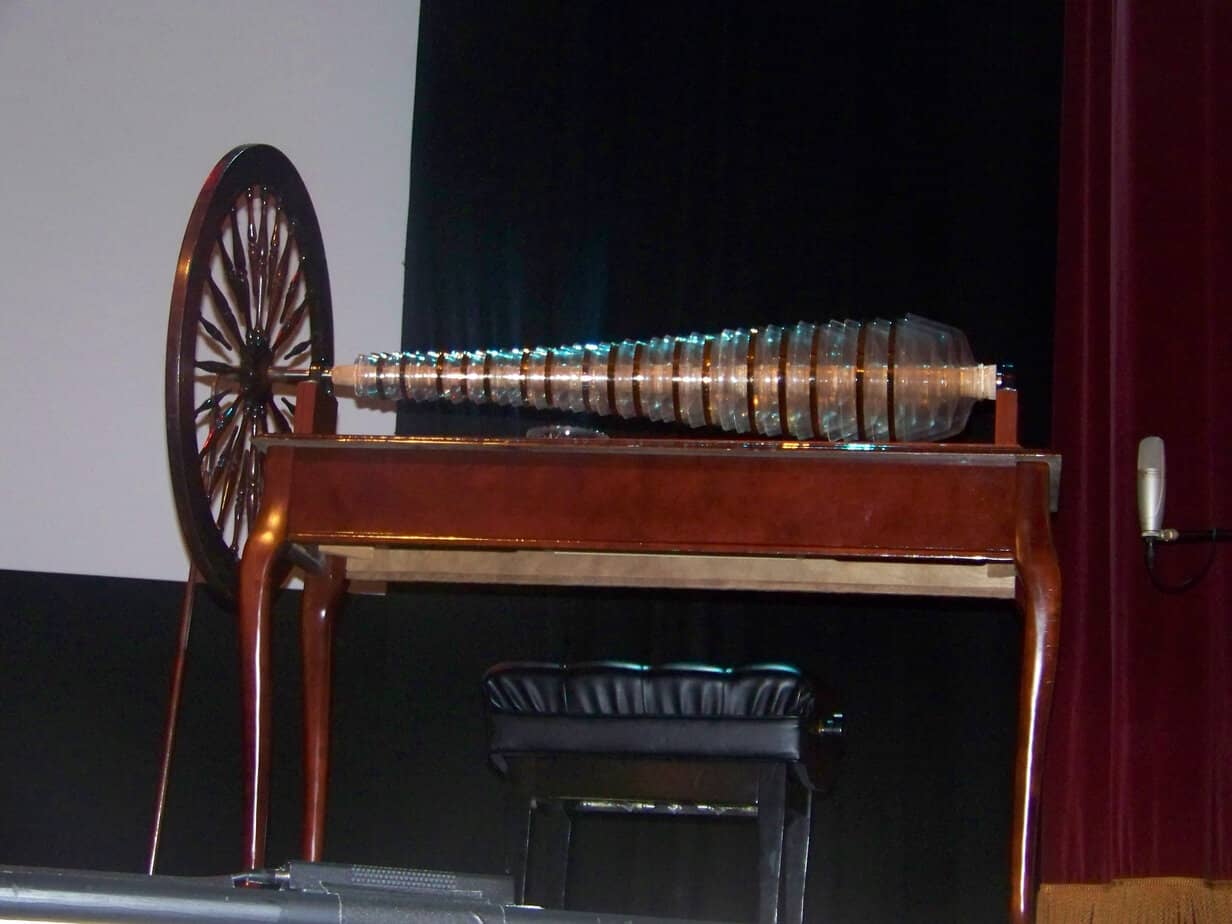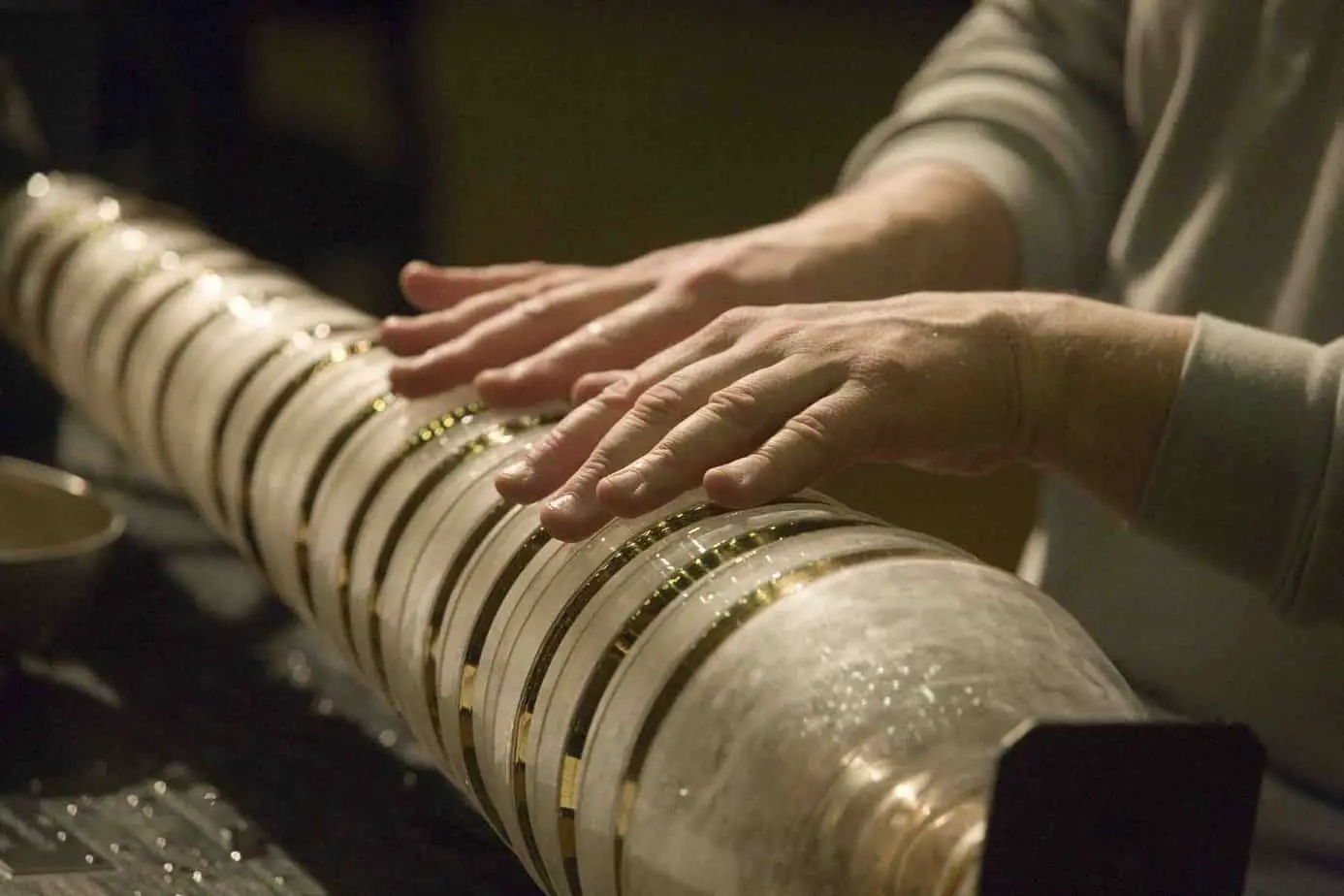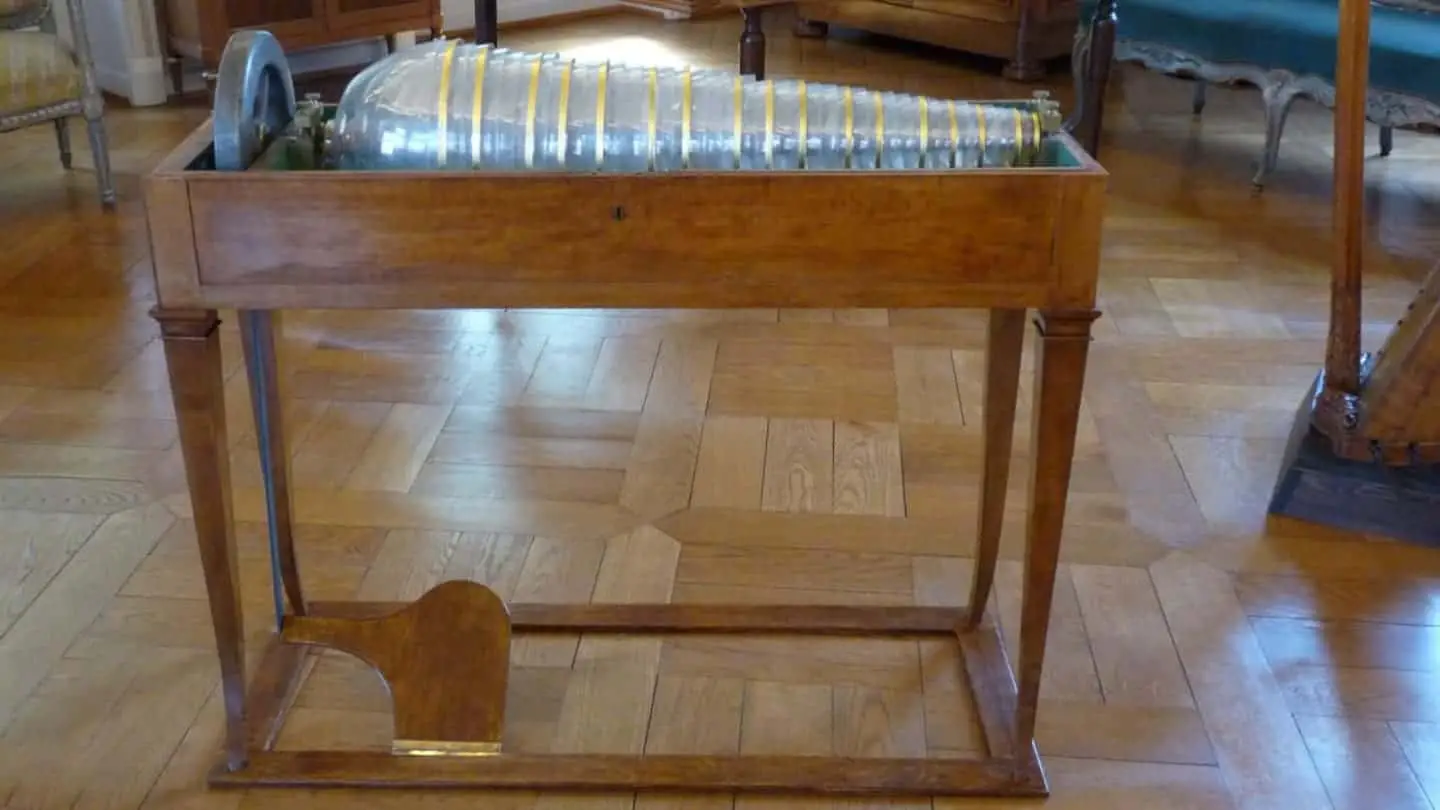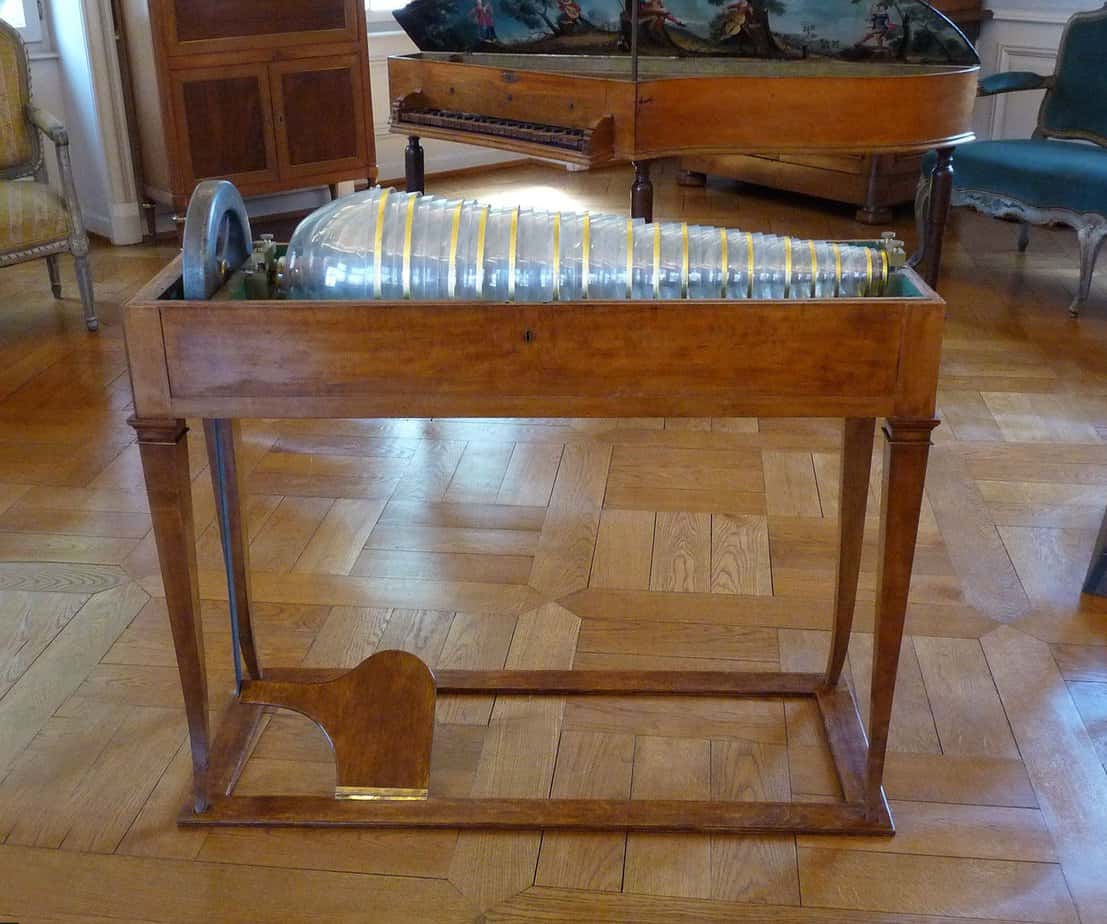Have you ever heard of the glass harmonica? It’s an instrument that was once very popular in the 18th century, but mysteriously fell out of favor and was even banned in some places. In this article, I’m going to explore the strange history of this mysterious musical instrument and answer the question: why was the glass harmonica banned?
History of the Glass Harmonica
- The glass harmonica, also known as the glass armonica, is a musical instrument that was invented in 1761 by Benjamin Franklin.
- The instrument was created by suspending glass bowls on a spindle and rubbing them with wetted fingers.
- The bowls are typically tuned with water, so that when the instrument is played, a gentle ringing sound is produced.
- The glass harmonica was popular in Europe throughout the 18th and 19th centuries and was used in many compositions, such as Mozart’s “The Magic Flute”.
- In the late 18th century, the instrument began to be associated with occult practices, which led to its eventual ban in many countries.
The Invention of the Glass Harmonica
- The glass harmonica, also known as the glass armonica, glass harmonium, or hydrocrystalophone, is a musical instrument invented in 1761 by Benjamin Franklin.
- It consists of a series of glass bowls that are mounted on an axle and rotated by a foot pedal. As the bowls rotate, they are played by friction with wetted fingers.
- The instrument produces a sound that is similar to a harp or a bell and is said to have a haunting and ethereal quality.
- The instrument quickly became popular throughout Europe, and was played by some of the most famous composers of the time, including Mozart, Beethoven and Haydn.
- It was even used as a therapeutic tool by some doctors, who believed that the sound it produced had healing properties.
Why was the Glass Harmonica Banned?
- The instrument was eventually banned in Europe due to its association with superstition and the occult.
- In particular, it was believed that the sound of the glass harmonica could drive people to insanity, leading to its ban in some parts of Europe.
- In addition, some churches and religious leaders also believed that the instrument was associated with the devil and should be avoided.
Popularity and Use of the Instrument
The glass harmonica was invented in 1761 by Benjamin Franklin and rose to popularity during the 18th century when it was used as an accompaniment to operas and other musical performances. The instrument was praised for its unique sound and its ability to replicate traditional instruments such as the harpsichord, violin, and flute. Despite its popularity, the glass harmonica was eventually banned in many places due to its purported link to mental illness and its association with dark magic. It was believed that the glass harmonica had the power to evoke dark spirits, and it was said to cause a number of physical and mental illnesses. As a result, it was banned in many countries and eventually fell out of popular use.
Reasons for Banning the Glass Harmonica
- The glass harmonica was believed to be linked to various mental illnesses and could induce erratic behavior in listeners.
- The sound of the glass harmonica was said to be so intense that it was sometimes deemed too loud for indoor performances.
- The glass harmonica was thought to be a form of mind control, as it was believed to be capable of manipulating people’s emotions.
- The instrument was associated with the occult and dark powers, as some people believed it could communicate with the dead.
- The glass harmonica was said to cause physical ailments such as headaches and nausea.
Effects of the Ban
| Effect | Description |
|---|---|
| Demise of Glass Harmonica | The glass harmonica was banned in many places during the late 18th century. This led to a rapid decline in its popularity, and it eventually became a forgotten instrument. |
| Decline in Interest | The glass harmonica was a popular instrument in its time, but after the ban its popularity slowly declined. This led to a decrease in the number of people interested in playing the instrument. |
| Loss of Repertoire | The banning of the glass harmonica also led to a loss of repertoire. Many pieces that were written for the instrument were lost, as no one was interested in playing them anymore. |
| Loss of Technique | The banning of the instrument also led to a loss of techniques. As no one was playing the instrument, the techniques that were developed became lost. |
The banning of the glass harmonica had a considerable effect on the instrument, its players, and its repertoire. It led to a rapid decline in its popularity, a decrease in the number of people interested in playing it, a loss of repertoire, and a loss of techniques.
Modern Re-emergence of the Glass Harmonica
- In the modern day, the glass harmonica has experienced a resurgence in popularity.
- It has become popular among classical and experimental musicians, who use it to create unique and beautiful music.
- The instrument is often used as a solo instrument or in small ensembles.
- There are even glass harmonica festivals in some countries, where enthusiasts gather together to celebrate the instrument and its music.
- The instrument is also featured in many movies and television shows.
- It has become a popular instrument in classrooms, as it is an excellent way to teach music theory and composition.
- The instrument is now being manufactured in various shapes and sizes, making it more accessible to musicians of all levels.
Frequently Asked Questions
What is the Glass Harmonica?
The Glass Harmonica is a musical instrument invented by Benjamin Franklin in the 18th century. It consists of a set of tuned glass bowls which are played by rubbing the rims with wet fingers. The sound produced is similar to a wind chime, but with a much wider range of tones. Although it has been used in classical music since the 18th century, it is still relatively unknown and is considered a niche instrument today.
What mysterious properties did the glass harmonica possess?
The glass harmonica was said to evoke spiritual and supernatural experiences in its listeners, leading to its ban in many countries. It was believed to possess healing properties and was even thought to cause insanity. Its eerie tones were said to bring listeners to trance-like states, making it a potential tool for witchcraft. Furthermore, its sound was found to be powerful enough to cause glass to vibrate and break.
What Events Led to the Banning of the Glass Harmonica?
In the late 18th century, the glass harmonica was a popular musical instrument in Europe. However, it eventually became the subject of superstition and controversy and was ultimately banned in certain parts of Europe. Reports of strange and unpredictable behavior among those who played it or listened to it were common. It was believed that the instrument caused mental illness or even death. Additionally, it was thought to be associated with the supernatural, which led to its association with witchcraft and the occult. This fear and superstition eventually led to the banning of the glass harmonica in some parts of Europe.
How Did People React to the Glass Harmonica?
The glass harmonica initially caused a sensation, with many people being mesmerized by the unique sound it produced. However, it also caused controversy, with many people believing it had supernatural powers and could cause insanity. Some even thought it was linked to the devil. This led to the instrument being banned in some cities and disliked by many people.
Is the Glass Harmonica Still Used Today?
The glass harmonica is not widely used today, although some classical composers have written pieces for the instrument and a few ensembles devoted to the glass harmonica still exist. The instrument is still appreciated for its haunting sound, but it has largely been replaced by other instruments due to its difficulty of use and the occasional bans it has endured due to superstitious beliefs.
Conclusion
The glass harmonica has a strange and mysterious past, with its wide popularity, short-lived fame and eventual ban. Despite its fall from grace, the glass harmonica has recently been enjoying a resurgence in popularity, with modern renditions of this unique instrument appearing in various musical performances. While the exact reason for its ban is still not clear, it is thought that the instrument’s eerie sound had something to do with its eventual disappearance. Although it has not been widely used in recent years, the glass harmonica will always remain a fascinating part of musical history.






